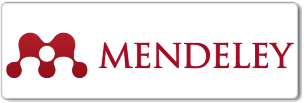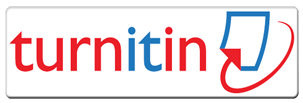PENGUKURAN TINGKAT KEMATANGAN TATA KELOLA TEKNOLOGI INFORMASI STUDI KASUS: PT. TRIPLE “A”
DOI:
https://doi.org/10.70746/jstunsada.v14i1.493Keywords:
Keywords: Information Technology, IT Governance, COBIT 4.1, Capability Maturity Model.Abstract
In today's digital age, information technology (IT) plays a vital role in supporting and improving a company's business performance. This article measures the degree of IT governance maturity in PT. Triple “A” Securities using the Weill and Ross IT Governance model as well as the COBIT 4.1 framework. The scope of the research includes the analysis of the plan and organize process in COBIT 4.1 and the measurement of the maturity rate using the COBIT 4.1 Maturity Model. The results of the study show that some IT processes in PT are at the initial (initial) and repeatable (repeatable) maturity levels, with an average maturity rating of 1.85, indicating that the company is between level 1 (ad hoc) and level 2 (repetable). Further analysis is done on IT decisions, business strategy, IT strategy, and process control. The conclusions of this study provide insight into the IT governance patterns that exist in the PT. Triple “A” Securities and suggest areas of improvement to improve the maturity of IT governance in the future. This research is also expected to be a benchmark for companies in managing IT more effectively and efficiently, as well as identifying obstacles and encouraging the implementation of good IT governance.
References
[2] Chen, Xin; Dai, Qizhi; Na, Chaohong. How Finance Shared Services Affect Profitability: An IT Business Value Perspective. Information Technology And Management . 2023. https://doi.org/10.1007/S10799-023-00391-1
[3] Huang, Rui; Zmud, Robert W.; Price, R Leon. Influencing The Effectiveness of IT Governance Practices Through Steering Committees and Communication Policies. 2010. European Journal of Information Systems. Volume 19, Pages 288–302.
[4] Lempinen, Heikki ; Rajala, Risto. Exploring Multi-Actor Value Creation Iin IT Service Processes. 2014. Journal of Information Technology Volume 29, Pages 170–185. https://link.springer.com/article/10.1057/Jit.2014.1
[5] Muhammad Malik Hakim, IT Audit of IT Service Provider Using COBIT 4.1 Framework: Case Study At PT. XYZ. Fountain Of Informastics. 2019. Vol. 2, No. 2, Pp. 32–38. Doi: Https://Doi.Org/10.21111/Fij.V2i2.1236.
[6] Nugroho, Heru. A Review on Information System Audit Using COBIT Framework. IJAIT (International Journal of Applied Information Technology). 2020. Vol. 3, No. 02. Pp. 46 – 52. https://doi.org/10.25124/ijait.V3i02.2114.
[7] Weill, Peter; Woodham, Richard. Don't Just Lead, Govern: Implementing Effective It Governance Firms Achieving Above Industry Average Returns From IT Investments Must Be Making Consistently Better IT-Related Decisions. 2002. No. 326.
[8] Caputo, Kim. CMM Implementation Guide: Choreographing Software Process Improvement. 1998. Addison-Wesley Professional.
[9] ITGI. Board Briefing on IT Governance. 2nd Edition. 2003. ISBN 1-893209-64-4.
[10] ITGI. IT Governance Implementation Guide: Using COBIT® And Val IT TM, 2nd Edition. 2007. ISBN 1-933284-75-7.
[11] Persse, James. Project Management Success With CMMI: Seven CMMI Process Areas 1st Edition. 2007. Prentice Hall.
[12] Weill, P., And Ross, J. W. IT Governance: How Top Performers Manage IT Decision Rights for Superior Results. Harvard Business Press. 2004.
[13] Maxlean Consulting. Balanced Scorecards Https://Www.Isomanajemen.Com/Bsc-Balanced-Scorecard/
Downloads
Published
How to Cite
Issue
Section
License
Copyright








